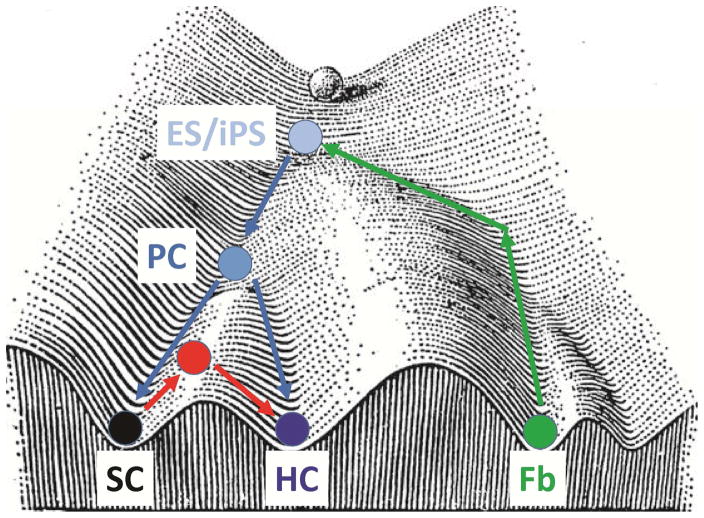Fig. 3.
Modified “Waddington landscape” for cochlear HC development and regeneration. The original (shaded) cell at the top of the “mountain” represents a zygotic cell. Below, along the “valley,” is an ES/iPS cell representing a pluripotent embryonic stem cell or induced pluripotent stem cell that can give rise to an otic progenitor cell (PC), which in turn gives rise to either a supporting cell (SC) or a hair cell (HC) by following the normal developmental paths (blue arrows). A differentiated fibroblast (Fb) can be reversely converted to iPS by the four Yamanaka factors, following an “uphill” path (green arrows) as opposed to the normal “downhill” developmental path. Importantly, the direct conversion of an SC to an HC takes a path (red arrows) that differs from that of indirect conversion in order to avoid the PC state; there is, therefore, a unique, hybrid cell type (red cell) that is different from a PC or ES/iPS.

